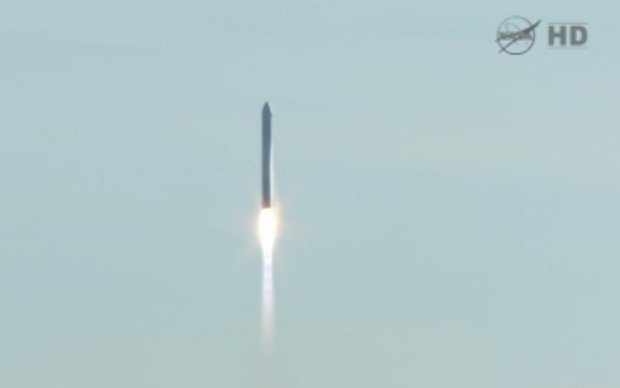
A little while ago, Orbital Sciences Corporation’s Cygnus spacecraft lifted off on an Antares rocket from the Mid-Atlantic Regional Spaceport (MARS), part of NASA’s Wallops Flight Facility (WFF) on Wallops Island, Virginia. After about 15 minutes it successfully separated from the last stage of the rocket and started its journey. This is its first official mission, Orbital-1 or simply Orb-1, of transport of supplies to the International Space Station for NASA.
This launch was originally scheduled for November 2013 but delays led to postpone it to December. At that point, however, on the International Space Station there was a failure of the internal cooling system that forced to make two spacewalks to repair it. As a result, NASA decided that the crew of the Station it was better to focus on that problem and the Orb-1 mission was postponed to January 2014. Yesterday, the launch was postponed because a solar flare caused an unusually high level of radiation coming from space that could create problems for Cygnus systems.
In today’s configuration, the Antares rocket uses a 30B Castor second stage, a version a bit more powerful than the one used in the two previous launches. Since this is the second version of this stage, the Antares configuration is indicated as 120 while the one used in the previous launches was indicated as 110, using the first version, 30A, of the second stage.
Although the Cygnus spacecraft will be destroyed in its re-entry into Earth’s atmosphere at the end of its mission, it’s been given a name. Orbital Sciences called it C. Gordon Fullerton after the astronaut who passed away in August 21, 2013.
In September 2013, the Cygnus spacecraft made a demonstration mission in which it carried about 600 kg (about 1,300 lb) of cargo. This time the cargo is more than double, about 1,465 kg (3,217 lb) including supplies, scientific experiments, spare parts and miscellaneous hardware needed to expand the scientific research capabilities of the International Space Station.
The cargo includes the SPHERES-Slosh experiment, small Synchronized Position Hold , Engage, Reorient Experimental Satellites (SPHERES) satellites with a diameter of 20cm (8″) that can operate in a variety of environments, including inside the Station. In this case, the satellites will examine how fluids move in containers in microgravity. This will help to better understand the behavior of propellants in spacecraft.
The Cygnus spacecraft should dock with the International Space Station on Sunday, January 12th. In its first demo mission the first approach maneuver failed due to an inconsistency in the formats of GPS data used by the computer of the spacecraft and the Station’s one. The problem was solved with a software update sent to the Cygnus and this time there should be no problems.
[ad name=”AmazonScience”]


Permalink